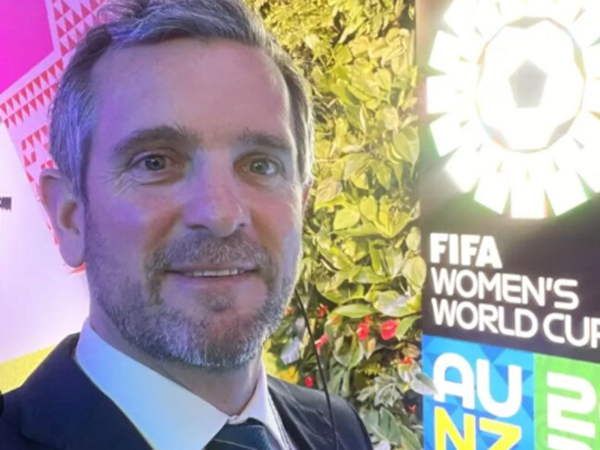[ad_1]

After months of fighting, Ukrainian troops are withdrawing from Avdiivka. Meanwhile, Ukraine’s campaign to engage Russia at sea and in depth continues with more drone attacks on oil infrastructure and another Russian ship sunk. In the US, Senators agreed to pass the Whitehouse’s emergency funding Bill to Congress. A step towards the US being able to release another US$ 60 billion of military aid to Ukraine.
Avdiivka
For four months Russia has been trying to take Avdiivka, a small town held by the 110th Separate Mechanised Brigade. This unit’s strength is approximately 2-3000 soldiers supported by about 30 tanks and 100 other armoured fighting vehicles. Since October 2023, the brigade has defended the town against relentless Russian attacks and on 13 February 2024 started to withdraw, supported by the elite 3rd Assault Brigade. This unit conducting spoiling attacks to slow down Russian pursuit letting the 110th Separate Mechanised Brigade ’break contact’ and withdraw.

This battle is interesting to study because it ‘pokes a pin’ in arguments that capturing ground means Russia is winning the war. The battle required Russia to keep a force of about 50,000 soldiers in the area. Conventional military wisdom is that an attacker needs at least a 3-1 advantage to be successful attacking defensive positions. In this battle, success required approximately a 20-1 advantage. An extremely high ratio that may demonstrate the impact of new technology; or simply poor Russian training. The ratio is important because it demonstrates how difficult it will be for Russia to take larger towns like Kramatorsk and Sloviansk, let alone a city like Kharkiv.
Further, the Centre for European Policy Analysis estimates that approximately 20,000 Russian soldiers have been killed, and 500 tanks destroyed during the battle. Ukrainian casualties are hard to estimate because they are not reported or published in open-source forums.
Avdiivka was always likely to fall, it is on a salient so can be engaged from three sides and Russia has over-whelming manpower and more artillery ammunition. However, Pyrrhic victories like Bakhmut and Avdiivka slowly attrit these advantages, they also indicate that Putin’s army is currently too small and poorly trained to capture a large Ukrainian city.
The wider campaign
Ukraine continues to defend against attacks along the whole front line, and is especially heavily engaged in the north-east near Kupiansk. Russia has a large force concentrated in this area and is aiming to capture the town as a prelude to either pushing west towards Kharkiv, or south towards the two remaining uncaptured cities in the Donbas; Kramatorsk and Sloviansk.

Last week, Caesar Kunikov a Russian amphibious ship was sunk by Ukraine near Altup on the southern tip of the Crimean Peninsula. The ship is a large landing ship and exploded immediately killing everybody on board indicating that it was carrying ammunition. The Russians have been using the Black Sea Fleet’s amphibious warfare ships to resupply their ground units. Tempting targets for Ukraine’s maritime strike assets.
Further, Ukraine’s attack on Russian oil infra-structure continues including attacking oil depots in Moscow and Kursk on 15 February 2024. The effect of these attacks is hard to judge but Ukraine’s ability to hit these targets demonstrates the weakness of Russian air defence.
Ukraine’s military leadership changes – Be ready for surprises
Last week we discussed President Zelenskyy’s removal of General Zaluzhnyi as commander of Ukraine’s armed forces. The new commander, General Oleksandr Syrskyi was born in Russia in 1965 and served in the Soviet army, fighting in Afghanistan. After the Soviet Union collapsed, he decided to remain in Ukraine and has served in the nation’s army, including fighting against Russia in 2014.
General Syrskyi, is often described as the natural successor to General Zaluzhnyi because of his competence and experience. He is renowned for detailed planning and for being a tough task master. News reports circulate that some Ukrainian soldiers describe him as a ‘butcher’ because of his willingness to sacrifice soldiers to achieve tactical objectives. He masterminded the defence of Bakhmut, that although successful in causing Russian casualties also meant accepting many Ukrainian casualties.
He appears to be a product of the Soviet military system, willing to accept casualties and focussed on the operational level of war. Sources describe his ability to mass artillery and use surprise to achieve fire supremacy. Likewise, the Kharkiv offensive demonstrated a Soviet style use of operational level surprise (i.e. drawing attention towards Kherson before attacking by surprise from Kharkiv) and tactics like envelopment. Accepting casualties is also a feature of the Soviet way of war.
General Syrskyi has stated that he intends to transition into defence on land, aiming to ‘exhaust’ the Russians. Many commentators interpret this statement and his appointment as evidence that Ukraine is settling into a defensive posture awaiting the outcome of the US election. However, if I was a Russian staff officer, I would be concerned about offensive action sooner because General Syrskyi has brought through a hand-picked team of young, battle-tested field commanders with him. Specifically, the following:
Brigadier General Andriy Hnatov, former commander of 36th Marine Brigade, a unit that distinguished itself at the battles of Mariupol and Bakhmut. If is also the unit that led establishment of the Ukrainian bridgehead on the east side of the Dnipro River.
Brigadier General Myhailo Drapaty, Joint Forces commander of the Kherson Sector. He distinguished himself by leading the initial defence of Kherson and Mykolaiv and then Kherson city’s eventual recapture. It is likely that he has a close relationship with Hnatov because they were both deeply involved in crossing the Dnipro in 2023.
Brigadier General Ihor Skibyuk, Commander of the 80th Air Assault Brigade, an elite unit that traces its lineage to a Soviet-era unit. He fought against the Russians in 2014 and the 80th Air Assault Brigade was one of the units that stopped Russia’s 5th Guards Tank Army near the Siviersky-Donetsk River, inflicting heavy casualties 2022. The 80th then led the successful Kharkiv Offensive in September 2022.
Colonel Vadym Sukharevsky, famous for taking command of the 59th Motorised Brigade, near Kherson in March 2022 and rebuilding the unit’s morale and combat capabilities. Earlier he served in Skibyuk’s 80th Air Assault Brigade. Sukharevsky’s 59th Motorised Brigade pioneered the use of strike drones especially in the counter battery role.
Colonel Pavlo ‘Hunter’ Palisa, in America at Staff College in 2022, he returned to Ukraine and fought in the Donbas. Initially serving in the 5th Kyiv Assault Regiment before transferring to the 93rd Mechanized Brigade. During his tenure the 93rd Mechanised Brigade spent months defending Bakhmut.
Studying the careers of these officers, it is apparent that they are likely to have known each other and all played pivotal leadership roles in the land campaign. Further, we see innovation for instance the 5th Kyiv Assault Brigade’s use of innovative infantry assault tactics, drones being used to hunt and kill Russian artillery by 59th Motorised Brigade or the crossing of the Dnipro River by 36th Marine Brigade. Additionally, Ukraine’s military is sometimes weakened by corruption and General Syrskyi and his young commanders are reported to have high integrity. It is also interesting that the commanders publicly reported are all from the army, the service that has currently suffered a significant setback. It may indicate that the performance of air and maritime commanders is seen as producing good results, meaning there is no need for leadership changes.
However, a group of young, battle-tested and innovative leaders, promoted and brought together under a new leader should be exciting interest on Russian staff planning teams. Being trained in the Soviet-era, General Syrskyi will understand maskirovka, the Russian term for strategic deception. So, we need to treat statements about committing to defence cautiously, especially when he is building such a capable group of young leaders around him. General Syrskyi may have bigger plans on land than many people appreciate.
Ring trading, how the White House continues to support Ukraine
Ukraine’s emergency aid is still stuck in the US political system, the Senate approving the emergency aid bill for congressional debate last week. Congress is currently on its two-week winter recess and when it returns, must immediately debate stopgap budget legislation to make sure that a shutdown of federal government is avoided. The politicking is dangerously up-productive as partisan political chauvinism trumps common sense. Many commentators are concerned that the emergency aid bill will die in Congress. I still optimistic but think the politicking will continue for a few months yet.
However, Ukraine, will not collapse in that time. It still has ammunition, expending approximately 2000 rounds a day in a rationed programme to conserve ammunition. And, the White House is furiously using the President’s ‘excess defence articles authority’ to procure military supplies for Ukraine. This piece of legislation authorises the President to ‘write off’ surplus military equipment. The equipment can then be traded to a 3rd party, in exchange for that country providing equipment to Ukraine. For instance, Ecuador recently agreed to supply Ukraine with military equipment in exchange for replacement with more modern US equipment. A process called ‘ring trading.’
‘Ring trading’ started with Germany trading modern equipment to Greece, Czech Republic and Slovenia in exchange for them giving old equipment to Ukraine. The US will be able to provide enormous support using this system, a point reinforced by Vladimir Putin’s furious reaction to the Ecuador deal.
‘Ring trading’ cannot provide the large-scale industrial support the US$ 60 billion aid package plans to but it does ensure that Ukraine is able to maintain its campaign in the short-to-medium term.
Summary
The war is entering its third year this month and although Avdiivka’s fall is a victory for Putin, it is a Pyrrhic victory that confirms the combat power Russia will require to take any larger city. If it takes 50,000 soldiers (roughly 10% of the 470,000 soldiers Russia has in Ukraine) and four months to capture a small town defended by a couple of thousand Ukrainian soldiers, then Putin has little hope of pushing deeper into Ukraine with his current force structure. Russia has 1200km of border to secure and Russian advances face fortresses like Kramatorsk and Sloviansk, twenty times larger than Avdiivka.
Essentially, Putin’s current force structure has culminated. It can maintain small local offensives but it is unlikely that Russia can take any larger towns or cities in the short to medium-term. Instead, it seems likely that Putin will focus on winning the election to create conditions for a larger scale mobilisation that puts more force on the ground around the US election. The Russian defence industry is mobilised, 40% of GDP is committed and now he just needs the manpower. So post-election, expect to see increased conscription and mobilisation of manpower in Russia.
Meanwhile Ukraine is hurting Russia, the drone attacks on its oil industry are incessant. The naval campaign is successfully driving the Russian’s out of the western Black Sea and allowing Ukraine to maintain trade revenue. On land there is a shake-up of land forces and promotion for a new generation of leaders. Ukraine still maintains a bridgehead across the Dnipro River, is successfully degrading Russian air superiority over Crimea and Kherson and new F 16s will start arriving from mid-year.
It may be optimistic but it seems that Ukraine may be creating the conditions for a transition to offensive operations on land sooner than many people expect. In fact, Ukraine may be forced to act aggressively because of the uncertainty created by the US election.
Ben Morgan is a bored Gen Xer, a former Officer in NZDF and TDBs Military Blogger – his work is on substack

[ad_2]
Source link





















